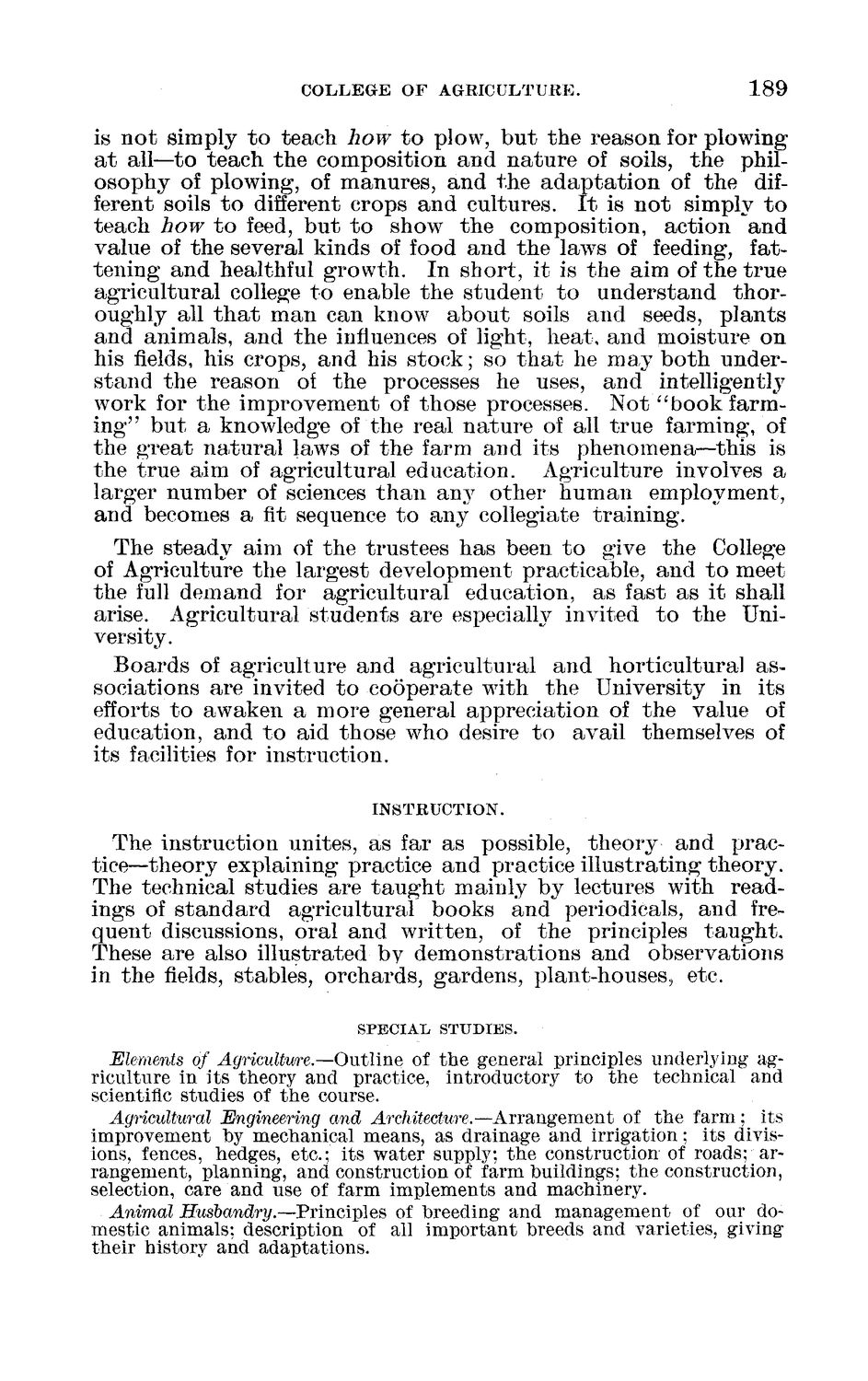| |
| |
Caption: Board of Trustees Minutes - 1890
This is a reduced-resolution page image for fast online browsing.

EXTRACTED TEXT FROM PAGE:
COLLEGE OF AGRICULTURE. 189 is n o t simply t o teach how t o plow, b u t the reason for plowing a t all—to teach t h e composition and n a t u r e of soils, t h e philosophy of plowing, of manures, and the a d a p t a t i o n of the different soils t o different crops and cultures. I t is n o t simply t o teach how t o feed, b u t t o show t h e composition, action and value of the several kinds of food and the laws of feeding, fattening and healthful growth. In short, it is t h e aim of t h e t r u e agricultural college t o enable the student t o understand thoroughly all t h a t m a n can know a b o u t soils and seeds, p l a n t s and animals, and the influences of light, heat, and moisture on his fields, his crops, and his stock; so t h a t he m a y b o t h understand the reason of the processes he uses, and intelligently work for the improvement of those processes. Not " b o o k farmi n g " b u t a knowledge of the real n a t u r e of all true farming, of the g r e a t n a t u r a l laws of the farm and its phenomena—this is the true aim of agricultural education. Agriculture involves a larger number of sciences t h a n any other h u m a n employment, and becomes a fit sequence t o any collegiate training. The steady aim of the trustees has been t o give the College of Agriculture t h e largest development practicable, and t o meet the full demand for agricultural education, as fast as it shall arise. Agricultural students are especially invited t o the University. Boards of agriculture and agricultural and horticultural associations are invited t o cooperate w7ith the University in its efforts t o awaken a more general appreciation of t h e value of education, and t o aid those who desire t o avail themselves of its facilities for instruction. INSTRUCTION. The instruction unites, as far as possible, theory and practice—theory explaining practice and practice illustrating theory. The technical studies are t a u g h t mainly by lectures with readings of s t a n d a r d agricultural books and periodicals, and frequent discussions, oral and written, of the principles t a u g h t . These are also illustrated by demonstrations and observations in the fields, stables, orchards, gardens, plant-houses, etc. SPECIAL STUDIES. Elements of Agriculture.—Outline of the general principles underlying agriculture in its theory and practice, introductory to the technical and scientific studies of the course. Agricultural Engineering and Architecture.—Arrangement of the farm; its improvement by mechanical means, as drainage and irrigation; its divisions, fences, hedges, etc.; its water supply; the construction of roads; arrangement, planning, and construction of farm buildings; the construction, selection, care and use of farm implements and machinery. Animal Husbandry.—Principles of breeding and management of our domestic animals; description of all important breeds and varieties, giving their history and adaptations.
| |